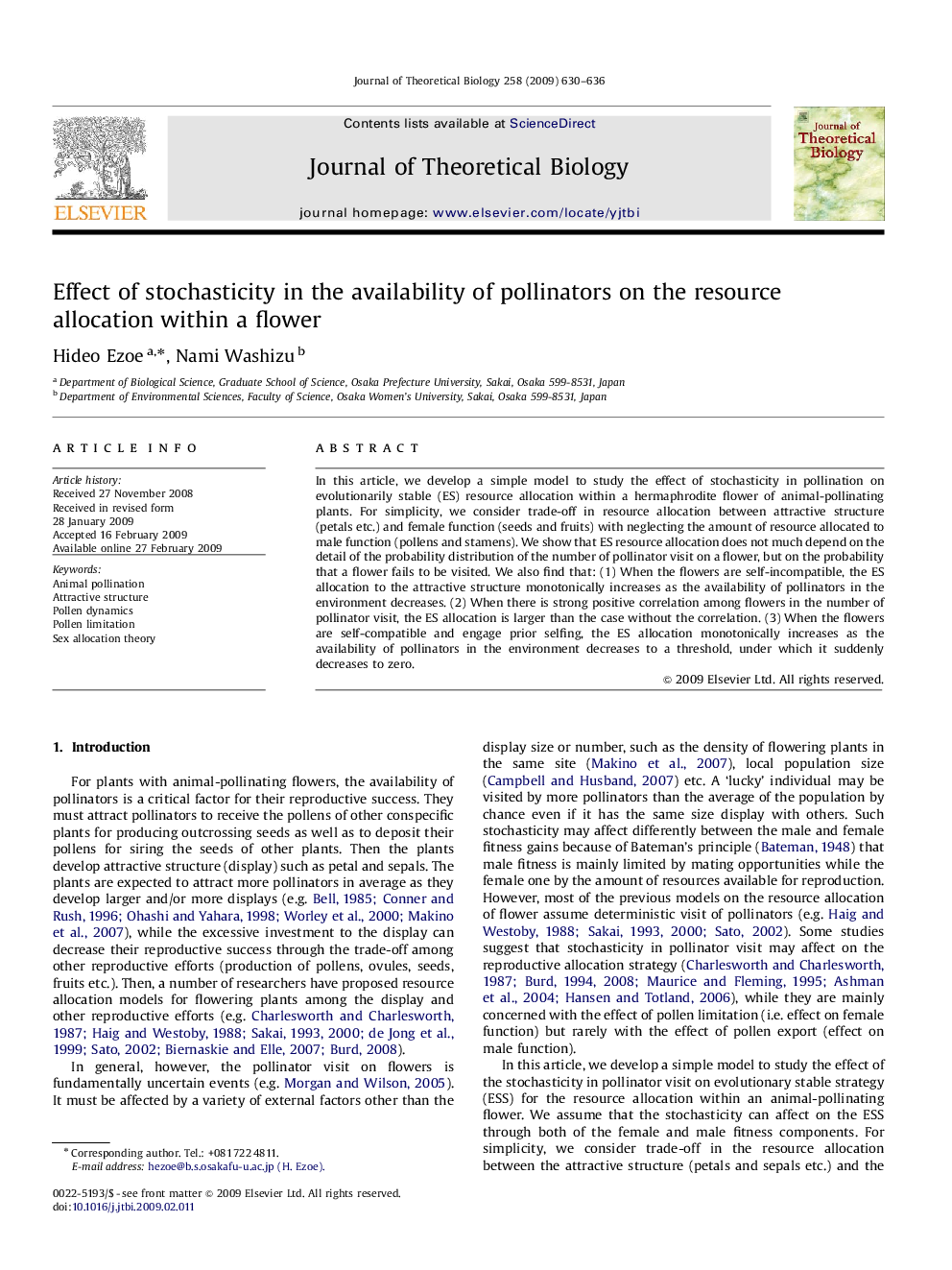| Article ID | Journal | Published Year | Pages | File Type |
|---|---|---|---|---|
| 4498064 | Journal of Theoretical Biology | 2009 | 7 Pages |
Abstract
In this article, we develop a simple model to study the effect of stochasticity in pollination on evolutionarily stable (ES) resource allocation within a hermaphrodite flower of animal-pollinating plants. For simplicity, we consider trade-off in resource allocation between attractive structure (petals etc.) and female function (seeds and fruits) with neglecting the amount of resource allocated to male function (pollens and stamens). We show that ES resource allocation does not much depend on the detail of the probability distribution of the number of pollinator visit on a flower, but on the probability that a flower fails to be visited. We also find that: (1) When the flowers are self-incompatible, the ES allocation to the attractive structure monotonically increases as the availability of pollinators in the environment decreases. (2) When there is strong positive correlation among flowers in the number of pollinator visit, the ES allocation is larger than the case without the correlation. (3) When the flowers are self-compatible and engage prior selfing, the ES allocation monotonically increases as the availability of pollinators in the environment decreases to a threshold, under which it suddenly decreases to zero.
Related Topics
Life Sciences
Agricultural and Biological Sciences
Agricultural and Biological Sciences (General)
Authors
Hideo Ezoe, Nami Washizu,
